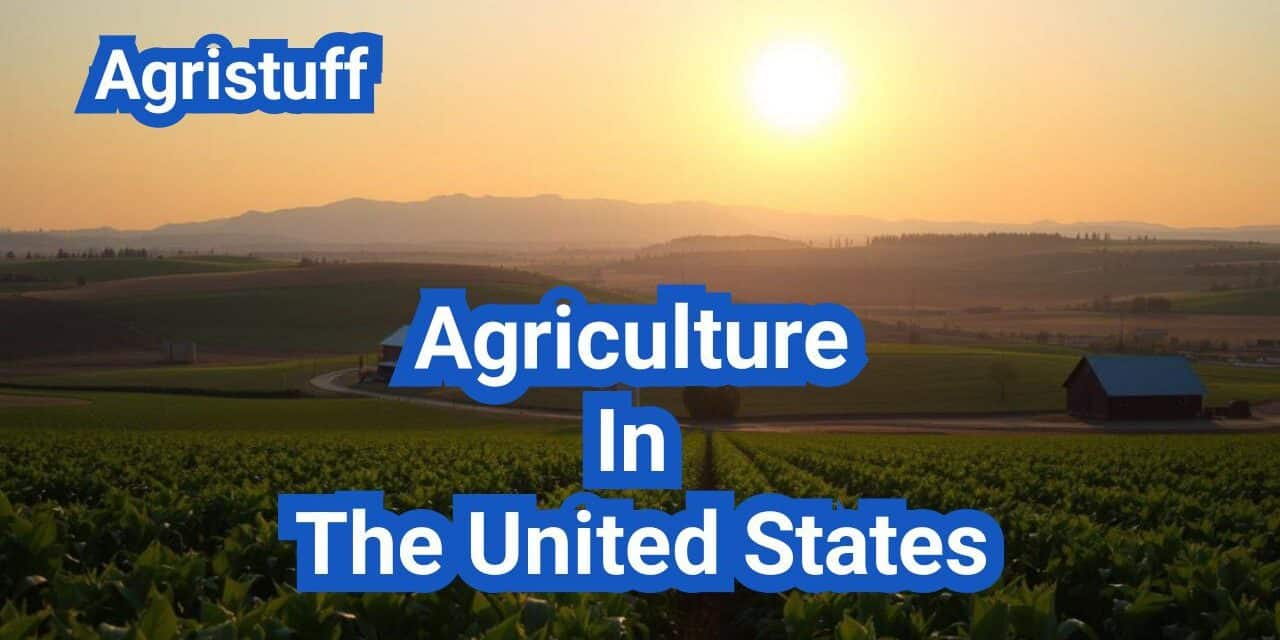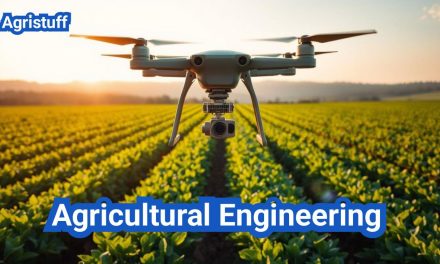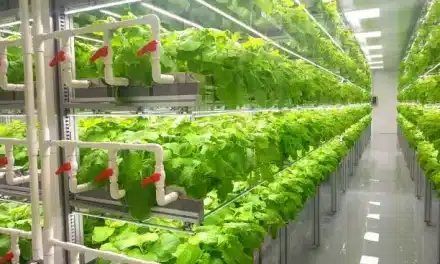The United States is renowned for its agricultural productivity, with vast areas dedicated to farming and livestock production. As a major agricultural producer, the country’s diverse climate and soil types support a wide range of crops and livestock.
This comprehensive guide will explore various aspects of agriculture in the United States, including the current state of farming practices, soil types, climate zones, and more. It aims to provide a thorough understanding of the techniques and practices involved in American agriculture.
Key Takeaways
- The US is a significant player in global agriculture.
- Diverse climate and soil support various crops and livestock.
- Farming practices are influenced by regional conditions.
- Livestock production is a crucial part of US agriculture.
- Understanding local conditions is key to successful farming.
The Current State of Agriculture in the United States
Agriculture in the United States is a complex and multifaceted sector, characterized by regional specialization and advanced farming practices. The industry is a significant contributor to the national economy, with a wide range of products being produced across different regions.
Key Statistics and Economic Impact
As of the 2017 census of agriculture, there were 2.04 million farms in the United States, covering an area of 900 million acres. This vast agricultural landscape contributes substantially to the country’s economy, with the industry generating significant revenue and providing employment opportunities.
The economic impact of agriculture is not limited to production alone; it also encompasses related sectors such as processing, transportation, and sales. The overall contribution of agriculture to the U.S. GDP is considerable, making it a vital part of the national economy.
Major Agricultural Regions and Their Specialties
The United States has several major agricultural regions, each with its unique specialties. The Corn Belt, which includes states like Iowa, Illinois, and Indiana, is renowned for its corn production. Similarly, the Wheat Belt, covering parts of Kansas, Nebraska, and the Dakotas, is a significant producer of wheat.
Other notable regions include the Central Valley of California, which is a leading producer of fruits, nuts, and vegetables, and the Great Plains, known for their extensive cattle ranches and farms. These regions play a crucial role in the country’s agricultural output, leveraging their specific climate and soil conditions to produce a wide range of crops and livestock.
Understanding American Soil Types and Climate Zones

Effective farming requires a deep understanding of the soil types and climate zones in your region. The United States is a vast country with diverse geography, resulting in a wide range of soil compositions and climatic conditions.
The varied soil types across America can be broadly categorized into several main types, including clay, silt, sand, and loam, each with its unique characteristics and nutrient content. Understanding these differences is crucial for selecting the right crops and farming practices.
How to Identify Your Local Soil Composition
Identifying your local soil composition is the first step towards optimizing your farming practices. This can be achieved through soil testing, which provides valuable insights into the soil’s nutrient content, pH level, and structure.
Soil Testing Methods
There are several methods for testing soil, including:
- Send a soil sample to a laboratory for detailed analysis.
- Use DIY soil testing kits for a more immediate, though less detailed, assessment.
- Observe the soil’s physical characteristics, such as its texture and drainage.
Interpreting Soil Test Results
Once you have your soil test results, interpreting them correctly is key to making informed decisions. Look for indicators such as pH levels, nutrient deficiencies, and soil texture. For instance, a soil pH below 6.0 may require liming to adjust the acidity.
Understanding your soil composition allows you to tailor your farming practices to the specific needs of your land, enhancing crop yields and sustainability.
Selecting the Right Crops for Your Region
Crop selection is a crucial aspect of farming, as it directly affects the yield and economic viability of your agricultural business. Different regions in the United States have unique agricultural profiles, influenced by factors such as climate, soil type, and market demand.
The Corn Belt, for instance, is renowned for its production of corn and soybeans, while the Central Valley of California is a hub for a variety of fruits, nuts, and vegetables. Understanding these regional characteristics is essential for making informed decisions about which crops to plant.
Cash Crops by Region
Cash crops are grown for sale rather than for personal consumption. The choice of cash crops varies significantly by region, depending on local conditions and market opportunities.
Traditional Commodity Crops
Traditional commodity crops include staples such as corn, soybeans, wheat, and cotton. These crops are widely traded and are often supported by established infrastructure.
“The United States is one of the world’s largest producers of corn, with the majority coming from the Corn Belt region.”
USDA
Regional Specialty Crops
Regional specialty crops, on the other hand, are crops that are particularly well-suited to specific regions. Examples include avocados in California, blueberries in Michigan, and peanuts in Georgia.
| Region | Traditional Commodity Crops | Regional Specialty Crops |
|---|---|---|
| Corn Belt | Corn, Soybeans | Popcorn, Pumpkins |
| California | Cotton, Tomatoes | Avocados, Almonds |
| Southeast | Cotton, Tobacco | Peanuts, Blueberries |
By understanding the cash crops that are most suitable for your region, you can make informed decisions that enhance your agricultural productivity and profitability.
Livestock Farming Fundamentals

Effective livestock farming practices are crucial for the success of American agriculture, particularly in the management of cattle, poultry, and swine. Livestock farming is a significant component of the agricultural landscape, providing essential products while requiring careful management to ensure health and productivity.
Cattle, Poultry, and Swine Management
Managing cattle, poultry, and swine effectively involves understanding their specific needs, including housing, space, and feeding programs. Proper housing and adequate space are critical for the health and well-being of livestock.
Housing and Space Requirements
- Cattle require spacious areas for grazing and shelter from extreme weather conditions.
- Poultry need secure housing to protect against predators and disease.
- Swine require clean, dry housing with adequate ventilation.
Feeding Programs
A well-planned feeding program is essential for the health and productivity of livestock. Nutritional needs vary by species, and farmers must ensure that their feeding programs meet these needs.
- Cattle benefit from a diet rich in fiber, including grasses and hay.
- Poultry require a balanced diet that includes proteins, vitamins, and minerals.
- Swine need a nutrient-rich diet that supports their growth and health.
By focusing on these fundamental aspects of livestock farming, farmers can improve the health and productivity of their animals, contributing to a successful and sustainable agricultural operation.
Essential Equipment for American Farming
American farming relies heavily on the right equipment to ensure efficient and productive operations. The type and quality of farming equipment can significantly impact the yield and profitability of farming operations.
Basic Farming Tools and Machinery
Farming operations, whether small or large, require a range of basic tools and machinery. These include tractors, plows, and harvesters, which are fundamental to most farming activities.
Equipment for Small Farms
Small farms often start with basic, versatile equipment such as compact tractors and manual tools. These are cost-effective and suitable for smaller land areas.
Large-Scale Operation Equipment
Large-scale farming operations, on the other hand, require more sophisticated and heavy-duty machinery, including large tractors, combine harvesters, and automated irrigation systems.
The choice between these types of equipment depends on the scale and type of farming operation. Understanding the specific needs of your farm is crucial in selecting the right equipment.
| Equipment Type | Small Farms | Large-Scale Farms |
|---|---|---|
| Tractors | Compact tractors | Heavy-duty tractors |
| Harvesters | Manual or small mechanical harvesters | Combine harvesters |
| Irrigation Systems | Simple sprinkler systems | Automated irrigation systems |
By choosing the appropriate equipment, farmers can improve efficiency, reduce labor costs, and increase productivity.
Land Preparation Techniques

Preparing the land for farming involves several critical steps that ensure optimal growing conditions. Effective land preparation is the foundation upon which successful farming operations are built.
Soil Testing and Amendment Steps
Soil testing is a crucial step in land preparation. It helps determine the soil’s nutrient content, pH level, and other characteristics that affect plant growth. Based on the test results, farmers can apply necessary amendments to improve soil fertility.
Correcting pH Imbalances | Agriculture In The United States
Soil pH significantly affects nutrient availability and microbial activity. Correcting pH imbalances is essential for optimal crop growth. If the soil is too acidic or alkaline, it can be adjusted by adding lime to raise the pH or sulfur to lower it.
Adding Organic Matter | Agriculture In The United States
Incorporating organic matter into the soil improves its structure, increases the water-holding capacity, and provides nutrients to plants. Common sources of organic matter include compost, manure, and cover crops.
The key steps in land preparation include:
- Conducting thorough soil testing
- Correcting pH imbalances
- Adding organic matter
- Tilling the soil to the appropriate depth
By following these steps, farmers can create a conducive environment for their crops to thrive.
Effective land preparation is a critical component of successful farming. By understanding and implementing proper soil testing and amendment techniques, farmers can significantly improve crop yields and contribute to sustainable agricultural practices.
Planting Strategies for Maximum Yield

To achieve maximum yield, farmers must carefully plan and execute their planting schedules, taking into account various environmental factors. This involves understanding the local climate, soil type, and other conditions that affect crop growth.
Timing Your Planting Schedule | Agriculture In The United States
The timing of planting is crucial and is largely determined by factors such as frost dates and growing degree days. Frost dates indicate when it is safe to plant tender crops outside, while growing degree days measure the amount of heat available for crop growth.
Using Frost Dates and Growing Degree Days | Agriculture In The United States
Frost dates are essential for avoiding damage to sensitive crops. By knowing the last spring frost date and the first fall frost date, farmers can plan their planting schedule accordingly. Growing degree days, on the other hand, help in understanding how much heat a crop needs to mature. This information is critical for selecting varieties that will mature within the available growing season.
For example, crops like corn and soybeans are typically planted after the last frost date, when the soil has warmed up sufficiently. Growing degree days are then used to predict when the crop will reach maturity.
Succession Planting Techniques | Agriculture In The United States
Succession planting involves planting small batches of seeds at regular intervals to extend the harvest season. This technique is particularly useful for crops like lettuce, spinach, and beans, which can be harvested in as little as 20 days.
By adopting succession planting, farmers can make efficient use of their land, reduce waste, and ensure a steady supply of fresh produce to the market. It’s a strategy that requires careful planning but can significantly enhance overall yield and profitability.
Irrigation Systems and Water Management

Farmers across the United States are increasingly focusing on advanced irrigation systems to optimize water use and enhance crop yields. Effective water management is crucial for crop health and productivity, making irrigation a vital component of modern farming practices.
Choosing the Right Irrigation Method
Selecting the appropriate irrigation system depends on several factors, including crop type, soil composition, and climate conditions. Different irrigation methods offer various benefits and challenges.
Drip Irrigation Installation | Agriculture In The United States
Drip irrigation is a highly efficient method that delivers water directly to the roots of plants, reducing evaporation and runoff. This method is particularly beneficial for crops that require consistent moisture levels.
The installation of drip irrigation systems involves laying out drip lines along the crop rows, ensuring that emitters are spaced appropriately to cover the root zone of each plant. While the initial setup can be labor-intensive, drip irrigation can significantly reduce water usage over time.
Pivot and Sprinkler Systems | Agriculture In The United States
Pivot irrigation systems, also known as center pivot irrigation, involve a rotating sprinkler system that distributes water in a circular pattern. This method is widely used for large-scale farming operations due to its efficiency and ability to cover vast areas.
Sprinkler systems, on the other hand, can be fixed or movable and are suitable for a variety of crops and soil types. They are effective for areas where drip irrigation is not feasible.
| Irrigation Method | Water Efficiency | Initial Cost | Suitability |
|---|---|---|---|
| Drip Irrigation | High | Moderate to High | Crops requiring consistent moisture |
| Pivot Irrigation | High | High | Large-scale farming operations |
| Sprinkler Systems | Moderate to High | Low to Moderate | Variety of crops and soil types |
By understanding the different irrigation methods available and their respective advantages, farmers can make informed decisions to optimize their water management practices and improve crop productivity.
Pest and Disease Management in American Agriculture

Managing pests and diseases is a critical aspect of agricultural productivity, requiring a comprehensive approach tailored to regional challenges. Effective management strategies are essential for protecting crops and ensuring the long-term sustainability of agricultural practices in the United States.
Common Agricultural Pests by Region
Agricultural pests vary significantly across different regions in the United States, with some pests being more prevalent in certain areas due to climate, soil, and crop types. Understanding these regional pest dynamics is crucial for developing effective pest management plans.
Identification Guide | Agriculture In The United States
Identifying pests correctly is the first step in managing them. Common agricultural pests include insects like aphids, caterpillars, and beetles, as well as nematodes and rodents. Each of these pests has distinct characteristics and damage symptoms that can be used for identification.
- Aphids: Small, soft-bodied insects found on plant stems and leaves, often causing curled or distorted leaves.
- Caterpillars: Larval stage of butterflies and moths, which can cause significant damage by eating leaves, stems, and fruits.
- Beetles: A diverse group with various feeding habits, some of which can be highly destructive to crops.
Monitoring Techniques
Regular monitoring is essential for early detection of pest issues. Techniques include visual inspection of plants, use of traps (such as sticky traps or pheromone traps), and monitoring of pest populations over time. By adopting these techniques, farmers can identify pest problems before they become severe.
| Pest Type | Damage Symptoms | Monitoring Method |
|---|---|---|
| Aphids | Curled or distorted leaves | Visual inspection, sticky traps |
| Caterpillars | Eaten leaves, stems, and fruits | Visual inspection, pheromone traps |
| Beetles | Variable, depending on species | Visual inspection, pitfall traps |
By understanding the types of pests prevalent in their region and using effective monitoring and identification techniques, farmers can implement targeted pest management strategies. This not only helps in reducing crop losses but also in minimizing the environmental impact of pest control measures.
Fertilization and Nutrient Management
The use of appropriate fertilizers is essential for maintaining soil health and promoting crop growth. Fertilization and nutrient management are critical components of agricultural practices, directly impacting crop yields and soil fertility.
Organic vs. Conventional Fertilizers
Farmers have the option to use either organic fertilizers or conventional fertilizers, each with its own set of benefits and drawbacks. Organic fertilizers, such as compost and manure, improve soil structure and provide a slow release of nutrients. In contrast, conventional fertilizers offer a quick release of nutrients but can lead to soil degradation if not used properly.
Making Compost and Natural Amendments
Creating compost involves decomposing organic materials to create a nutrient-rich soil amendment. This process not only recycles waste but also enhances soil biodiversity. To make compost, farmers can combine green materials (like food scraps and grass clippings) with brown materials (such as dried leaves and straw).
Chemical Fertilizer Calculations | Agriculture In The United States
When using conventional fertilizers, accurate calculations are crucial to avoid over-fertilization, which can harm the environment. The N-P-K ratio (Nitrogen-Phosphorus-Potassium) is a key factor in determining the appropriate fertilizer application rate. For example, a fertilizer with an N-P-K ratio of 10-10-10 is suitable for general crop growth.
| Fertilizer Type | N-P-K Ratio | Application Rate |
|---|---|---|
| Conventional | 10-10-10 | 100 kg/ha |
| Organic | Varies | 200 kg/ha |
Effective fertilization strategies require a balanced approach, considering both the type of fertilizer and the application rate. By understanding the differences between organic and conventional fertilizers, farmers can make informed decisions to optimize their crop yields while maintaining soil health.
Agricultural Financing and Risk Management

The agricultural sector relies heavily on financing options to maintain productivity and mitigate risks. Effective management of these aspects is crucial for the sustainability of farming operations.
USDA Loans and Grant Programs
The United States Department of Agriculture (USDA) offers various loan and grant programs designed to support farmers and ranchers. These programs are essential for the development and continuation of agricultural businesses.
Application Process | Agriculture In The United States
To apply for USDA loans or grants, farmers must follow a detailed application process. This involves submitting financial statements, business plans, and other relevant documentation.
Qualification Requirements | Agriculture In The United States
Qualification requirements for USDA programs vary depending on the specific loan or grant. Generally, applicants must demonstrate a viable business plan, adequate financial resources, and compliance with environmental and regulatory standards.
Below is a summary of key USDA loan and grant programs available to farmers:
| Program | Description | Eligibility |
|---|---|---|
| USDA Direct Farm Ownership Loan | Assists farmers in purchasing or improving farms. | Beginning farmers, socially disadvantaged farmers |
| USDA Operating Loan | Provides financing for operating expenses. | Farmers who demonstrate the ability to repay |
| Value-Added Producer Grant | Supports the development of value-added products. | Farmers, ranchers, and agricultural cooperatives |
Understanding these programs and their requirements can help farmers make informed decisions about their financing options.
Sustainable Practices in Agriculture in the United States

The adoption of sustainable practices in U.S. agriculture is crucial for long-term environmental and economic viability. As the agricultural sector continues to evolve, farmers are increasingly turning to methods that not only enhance soil health and reduce environmental impact but also improve crop yields and farm profitability.
Implementing Conservation Methods
Conservation methods are at the heart of sustainable agriculture. These practices help in preserving natural resources, reducing soil erosion, and improving water quality. Two effective conservation methods are cover cropping systems and rotational grazing.
Cover Cropping Systems | Agriculture In The United States
Cover cropping involves planting crops between crop cycles to protect and enrich the soil. This practice helps in reducing soil erosion, improving soil health, and increasing biodiversity. Benefits of cover cropping include:
- Enhanced soil structure and fertility
- Increased organic matter
- Improved water retention and reduced runoff
As noted by agricultural experts, “Cover crops are a valuable tool for farmers looking to adopt more sustainable practices.”
Rotational Grazing | Agriculture In The United States
Rotational grazing is a livestock management practice that involves rotating animals through different grazing areas to allow vegetation to recover. This method improves pasture health, increases livestock productivity, and reduces environmental impact.
“Rotational grazing is a powerful strategy for enhancing soil carbon sequestration, improving water cycles, and promoting biodiversity.”
The benefits of rotational grazing include:
- Improved pasture productivity and health
- Enhanced soil carbon sequestration
- Better water management and reduced erosion
By adopting these sustainable practices, U.S. farmers can contribute to a more environmentally friendly agricultural sector while maintaining economic viability.
Marketing and Selling Your Agricultural Products
In the ever-evolving agricultural landscape, understanding how to market and sell products effectively is vital for success. Farmers and agricultural producers must navigate a complex web of consumer demands, market trends, and sales channels to ensure the viability of their operations.
Direct-to-Consumer Sales Strategies
Direct-to-consumer sales have become an increasingly popular method for farmers to increase their profit margins and build a loyal customer base. By cutting out intermediaries, farmers can have more control over the sales process and gather valuable feedback from consumers.
Farmers Markets and CSAs | Agriculture In The United States
Farmers markets and Community Supported Agriculture (CSA) programs are traditional yet effective direct-to-consumer sales strategies. Farmers markets provide a physical platform for farmers to showcase their products and interact with customers. CSAs allow consumers to purchase a share of the farm’s produce, providing farmers with upfront capital.
“Farmers markets are not just places to buy food; they are community hubs where local economies are supported, and social bonds are strengthened.”
Online Marketing Platforms | Agriculture In The United States
The rise of digital technology has opened new avenues for farmers to market and sell their products. Online marketing platforms enable farmers to reach a wider audience beyond geographical limitations. Social media, e-commerce websites, and online marketplaces are becoming essential tools for agricultural marketing.
| Sales Channel | Benefits | Challenges |
|---|---|---|
| Farmers Markets | Direct customer interaction, immediate payment | Limited by location and time |
| CSAs | Upfront capital, customer loyalty | Risk of crop failure, customer expectations |
| Online Platforms | Wide reach, flexible marketing | Technical skills required, competition |
By leveraging these direct-to-consumer sales strategies, farmers can enhance their market presence and improve profitability. As the agricultural sector continues to evolve, adapting marketing strategies to meet changing consumer demands will be crucial.
At The End of: Agriculture In The United States
Agriculture in the United States is a complex and multifaceted industry that plays a vital role in the country’s economy and food security. As we have explored in this comprehensive guide, the future of agriculture in the United States depends on adopting sustainable farming practices, leveraging technology, and understanding market demands.
By understanding the current state of agriculture, selecting the right crops for your region, and implementing effective land preparation techniques, farmers can improve their yields and contribute to a more sustainable food system. Additionally, embracing innovative irrigation systems, pest management strategies, and fertilization techniques can further enhance agricultural productivity.
As the industry continues to evolve, it is essential for farmers, policymakers, and stakeholders to work together to address the challenges facing American agriculture. By promoting sustainable practices, supporting agricultural research and development, and fostering a favorable business environment, we can ensure a bright future for agriculture in the United States.
FAQ
What is the current state of agriculture in the United States?
The current state of agriculture in the United States is characterized by its vast scale and regional specialization, with significant contributions to the national economy.
How do I identify my local soil composition?
You can identify your local soil composition through testing methods, including soil sampling and analysis, to determine its type and nutrient content.
What are the most profitable crops to grow in my region?
The most profitable crops to grow in your region depend on factors such as climate, soil type, and market demand, with traditional commodity crops and regional specialty crops being viable options.
How do I manage livestock effectively?
Effective livestock management involves providing proper housing, feeding, and health care for animals such as cattle, poultry, and swine.
What equipment do I need for farming?
The equipment needed for farming varies depending on the scale and type of operation, but may include tractors, plows, and irrigation systems.
How do I prepare my land for farming?
Land preparation involves soil testing and amendment, including correcting pH imbalances and adding organic matter to enhance soil fertility.
How do I determine the optimal planting schedule for my crops?
You can determine the optimal planting schedule by using frost dates and growing degree days to plan your planting, as well as succession planting techniques to extend the growing season.
What irrigation method is best for my farm?
The best irrigation method for your farm depends on factors such as crop type, soil type, and water availability, with options including drip irrigation, pivot systems, and sprinkler systems.
How do I manage pests and diseases in my crops?
Managing pests and diseases involves identifying common agricultural pests by region, monitoring for pest issues, and using integrated pest management techniques.
What are the differences between organic and conventional fertilizers?
Organic fertilizers, such as compost, are derived from natural sources, while conventional fertilizers are synthetic, with the choice between them depending on farming practices and crop requirements.
How can I access agricultural financing options?
Agricultural financing options, including USDA loans and grant programs, are available to support farmers, with qualification requirements and application processes varying depending on the program.
What sustainable practices can I implement on my farm?
Sustainable practices, such as conservation methods, including cover cropping systems and rotational grazing, can help farmers implement environmentally friendly practices.
How can I market and sell my agricultural products effectively?
Effective marketing and sales strategies, including direct-to-consumer sales channels such as farmers markets, CSAs, and online marketing platforms, can help farmers reach consumers and sell their products.
What are the benefits of using crop rotation?
Crop rotation can help improve soil fertility, reduce pest and disease pressure, and increase crop yields, making it a valuable practice for farmers.
How can I improve soil health?
Improving soil health involves practices such as adding organic matter, using cover crops, and minimizing tillage to enhance soil fertility and structure.
Conclusion of: Agriculture In The United States
Introduction to Agriculture in the United States
Agriculture in the United States is one of the world’s most productive, diverse, and technology-driven food systems, supplying a large domestic market and playing a major role in global trade. It spans huge commodity farms producing corn, soybeans, wheat, and cotton, alongside high-value operations growing fruits, vegetables, nuts, and specialty crops.
Beyond what happens on farms, Agriculture in the United States includes a full “food and fiber” chain—seed and equipment companies, input suppliers, processors, logistics networks, and retailers—that together shape rural livelihoods and national food security. The scale of this system matters to everyday consumers because it influences food prices, dietary options, and the resilience of supply during disruptions. USDA ERS overview of agriculture’s role in the U.S. economy
Historical Roots and the Rise of a Modern Farm Economy
To understand Agriculture in the United States today, it helps to look at how quickly it evolved from small homesteads into an industrial, science-based sector. Indigenous peoples practiced sophisticated farming long before European arrival, and colonists adapted crops and livestock to new environments. In the 1800s, westward expansion and federal land policy accelerated settlement, while railroads opened national markets.
The land-grant university system, created through the Morrill Acts, tied public education directly to agricultural research and extension, spreading practical innovations to farmers. Over the 20th century, tractors, combines, fertilizers, hybrid seeds, and later biotechnology and digital tools transformed yields and labor needs, turning Agriculture in the United States into a global productivity benchmark. USDA National Agricultural Library on land-grant universities
Farm Structure, Size, and Ownership Patterns
Agriculture in the United States is still largely family-owned, but farm business structures range from part-time lifestyle farms to large commercial operations. USDA identifies roughly 1.9 million farms covering about 876 million acres, and while the average farm is a few hundred acres, production is concentrated: a smaller share of large farms accounts for the majority of output and sales.
Smaller farms remain essential for local food diversity and rural stability, whereas large farms tend to dominate commodity markets and export supply. This “dual structure” shapes policy debates, land prices, and how new technologies spread through Agriculture in the United States. USDA NASS Farms and Land in Farms summary
Regional Specialization Across a Continental Landscape
The geography of Agriculture in the United States explains much of its strength. The Midwest Corn Belt, with deep prairie soils, is the nation’s core for corn and soybean production. The Northern Plains and parts of the West form expansive wheat regions, built around dryland farming and large field operations.
The South contributes cotton, rice, peanuts, poultry, and beef cattle, supported by longer growing seasons. The West—especially California’s Central Valley and coastal zones—anchors specialty crops such as almonds, grapes, berries, lettuce, and citrus. This regional specialization allows Agriculture in the United States to produce a wide range of foods efficiently, but it also means climate shocks or water limits in one region can ripple nationally. USDA ERS crop regions and production topics
Major Field Crops and the Commodity Backbone
Commodity field crops are the volume engine of Agriculture in the United States. Corn and soybeans lead acreage, farm income, and downstream uses—food ingredients, livestock feed, ethanol, biodiesel, and industrial products. Wheat remains central to flour and export markets, while cotton supports the textile supply chain. Sorghum, barley, and rice maintain region-specific importance, often tied to irrigation or feed demand. The dominance of these crops affects everything from fertilizer demand to land competition and trade leverage, so shifts in commodity prices strongly influence the profitability and planting decisions that define Agriculture in the United States year to year. USDA ERS commodity and farm income charts
Livestock, Poultry, and Dairy Production Systems
Animal agriculture is the second main pillar of Agriculture in the United States, adding high value to the feed grains grown nationwide. Beef cattle production spans pasture-based cow-calf operations and large feedlots, while pork relies on specialized breeding, feeding, and processing systems. Poultry is highly integrated, giving the U.S. some of the world’s most affordable chicken and turkey supplies. Dairy farms—from small pasture herds to large confinement systems—support a major processing sector producing cheese, butter, milk powders, and yogurt for domestic use and export. These systems keep Agriculture in the United States competitive in protein markets, while increasing attention to manure management, animal welfare, and methane reduction. USDA ERS animal products overview
Economic Impact Beyond the Farm Gate
At the farm gate, Agriculture in the United States represents a modest slice of GDP, but the full food system contribution is much larger. Processing plants, grain elevators, trucking fleets, cold storage, grocery supply chains, and restaurants all depend on farm output. USDA estimates agriculture and related food industries contribute trillions of dollars to national GDP and support a significant share of U.S. jobs. This multiplier effect means the health of Agriculture in the United States directly affects rural employment, infrastructure investment, and the stability of many small towns whose economies are tied to seasonal production cycles. USDA ERS on agriculture’s share of GDP and jobs
Exports, Trade Partners, and Global Food Influence
Agriculture in the United States is tightly linked to world markets, with exports routinely topping well over $150 billion annually. Soybeans, corn, beef, pork, poultry, wheat, dairy products, and tree nuts are major export categories, and Mexico and Canada are consistently among the top buyers, alongside key Asian markets. Export strength helps stabilize farm revenues and supports jobs in processing and logistics. However, trade disputes, tariff shifts, and currency swings can change demand quickly, so Agriculture in the United States remains sensitive to international politics and global consumption trends. USDA Foreign Agricultural Service trade data
Technology, Biotechnology, and Precision Farming
Innovation defines Agriculture in the United States, and the last two decades have accelerated that trend. Farmers now commonly use GPS-guided tractors, auto-steer, yield monitors, variable-rate fertilizer and seeding, and remote sensing from drones or satellites. Biotechnology—such as genetically engineered corn, soybeans, and cotton—has raised yields and simplified pest management on many farms. Digital platforms help manage field records, market hedging, and input timing. While adoption is highest on large commercial farms, precision tools are spreading to more mid-sized and specialty operations, improving efficiency and reinforcing the global productivity advantage of Agriculture in the United States.
Water Use, Irrigation, and Drought Stress
Water availability is a strategic factor for Agriculture in the United States, especially in the arid West. Irrigated systems support high-value crops and stable yields, but they also compete with urban and environmental needs. Groundwater dependence in places like California’s Central Valley and the High Plains has raised concerns about long-term aquifer decline, while reservoirs and snowpack shifts affect surface-water supplies. Efficient technologies—drip irrigation, micro-sprinklers, soil-moisture sensors, and improved scheduling—are essential to keeping Agriculture in the United States productive under increasingly variable rainfall and drought patterns. USDA ERS on irrigation and water use
Soil Health, Conservation Practices, and Sustainability Programs
Soil and ecosystem stewardship has become a core priority in Agriculture in the United States, driven by both farmer experience and public policy. Practices such as reduced tillage, cover cropping, diverse rotations, grassed waterways, and nutrient management plans can reduce erosion, improve water quality, and build organic matter. USDA conservation programs—like EQIP and CSP—help farmers adopt these methods through cost-sharing and technical support. Cover crops have expanded across millions of acres as producers seek resilience against floods and droughts. These changes show how Agriculture in the United States is evolving toward productivity that also protects long-term land value. USDA NRCS conservation programs
Organic, Local, and Specialty Crop Expansion
Alongside big commodity systems, Agriculture in the United States includes fast-growing organic and local markets. Certified organic acreage and sales have risen steadily, especially in produce, dairy, and packaged foods, driven by consumer demand for premium and environmentally minded products. Local and regional supply chains—farmers markets, community-supported agriculture, farm-to-school programs, and direct-to-consumer online sales—help smaller farms capture higher margins. Specialty crops, led by California and other coastal or irrigated regions, add diversity and nutrition to national diets and highlight the breadth of Agriculture in the United States beyond grains and livestock. USDA ERS overview of organic agriculture
Labor, Immigration, and Rural Community Realities
Labor is a persistent challenge for Agriculture in the United States, particularly in fruit, vegetable, and dairy operations where hand work and daily animal care matter. Seasonal and migrant labor programs, including H-2A, are critical to harvesting many specialty crops, and shortages can lead to unharvested acreage and higher consumer prices. Rural communities also face aging populations, limited healthcare access, and fewer young entrants into farming. Addressing labor stability through fair policy, mechanization, and rural investment is increasingly viewed as essential for keeping Agriculture in the United States competitive and socially sustainable. USDA ERS farm labor information
Climate Risk, Insurance, and Adaptation Strategies
Climate variability is reshaping Agriculture in the United States through heat stress, shifting pest ranges, heavier storms, and longer droughts. Farmers are adapting with drought-tolerant varieties, improved drainage, diversified rotations, and better water management. Federal crop insurance and disaster assistance remain key safety nets, helping producers survive catastrophic years and replant the next season. Climate-smart initiatives encourage soil carbon storage, reduced emissions, and resilience practices. The future productivity of Agriculture in the United States will depend on how effectively farms combine on-the-ground adaptation with supportive research and risk-management tools. USDA Climate Hubs adaptation resources
Future Outlook: Policy, Markets, and Innovation Paths
The next chapter of Agriculture in the United States will be shaped by market demand, policy choices, and the pace of technology. Growth in renewable fuels, bio-based materials, sustainable proteins, and traceable supply chains offers new income streams. Robotics, AI-guided decisions, and next-generation genetics may reduce labor pressure and improve input accuracy. At the same time, farmers must manage volatile fertilizer and feed prices, rising land costs, water limits, and uncertainty around the Farm Bill and conservation funding. Balancing high output with environmental durability and rural vitality is the central mission for Agriculture in the United States over the coming decades. Congressional Research Service Farm Bill background
Final thought
Agriculture in the United States remains a cornerstone of national well-being because it merges scale, science, and regional diversity into a single food system. Its productivity supports affordable diets at home and reliable export supplies abroad, yet its long-term success will rely on smart water use, healthier soils, stable labor pipelines, and climate resilience. As technology and sustainability priorities rise together, Agriculture in the United States has a real opportunity to lead not only in harvest volumes, but also in responsible stewardship that keeps farms thriving for generations. USDA official agriculture portal
Sources & References
Below are authoritative references supporting the key facts and themes discussed about Agriculture in the United States.
- Wikipedia.org/wiki/Agriculture_in_the_United_States
- USDA Economic Research Service (ERS)
- USDA ERS – Ag and Food Statistics
- USDA NASS – Farms and Land in Farms Summary
- USDA ERS – Crops Topic Page
- USDA ERS – Animal Products Topic Page
- USDA FAS – Agricultural Trade Data
- USDA ERS – Irrigation & Water Use
- USDA NRCS – Conservation Programs
- USDA ERS – Organic Agriculture
- USDA ERS – Farm Labor
- USDA Climate Hubs – Adaptation Resources
- CRS – Farm Bill Context Report










